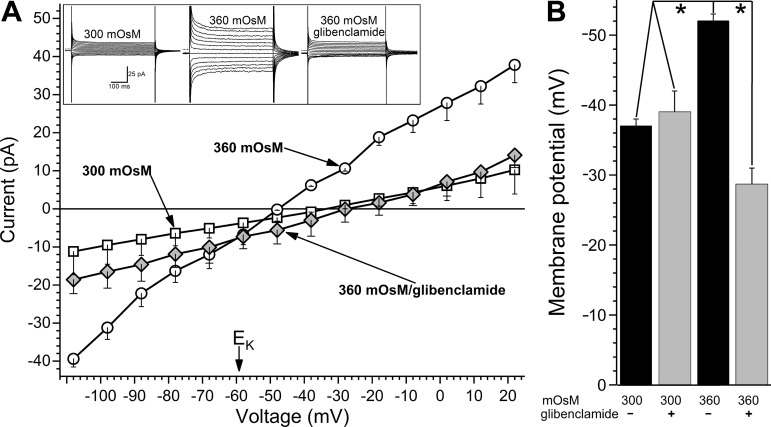Fig. 4.
Role of ATP-sensitive K+ (KATP) channels in the voltage increase generated by conjunctival goblet cells in response to hyperosmolarity. A: averaged current-voltage (I–V) relations of goblet cells (n = 5) monitored in the 300 mosM solution, >6 min after switching to the 360 mosM solution and >3 min after addition of 0.5 µM glibenclamide to the hyperosmotic solution. EK, equilibrium potential for K+. Inset: current traces obtained from a goblet cell during the three experimental conditions. Dotted lines to the left of the traces show zero-current levels. B: membrane potentials of goblet cells recorded in 300 or 360 mosM solutions without (−) or with (+) glibenclamide. Elimination of the hyperosmotic-induced hyperpolarization by this KATP channel blocker supports the hyperpolarizing role of these ion channels. Of note, the possibility of a small depolarizing component being concomitantly activated is suggested by the finding that the goblet cell voltage was lower (P = 0.0439) in the 360 mosM/glibenclamide solution than in the 300 mosM/glibenclamide solution. Sample sizes were as follows: 300 mosM/no glibenclamide, 21 (data shown in Fig. 2); 360 mosM/no glibenclamide, 28 (data shown in Fig. 2); other experimental groups, 6 each. *P < 0.0001.

